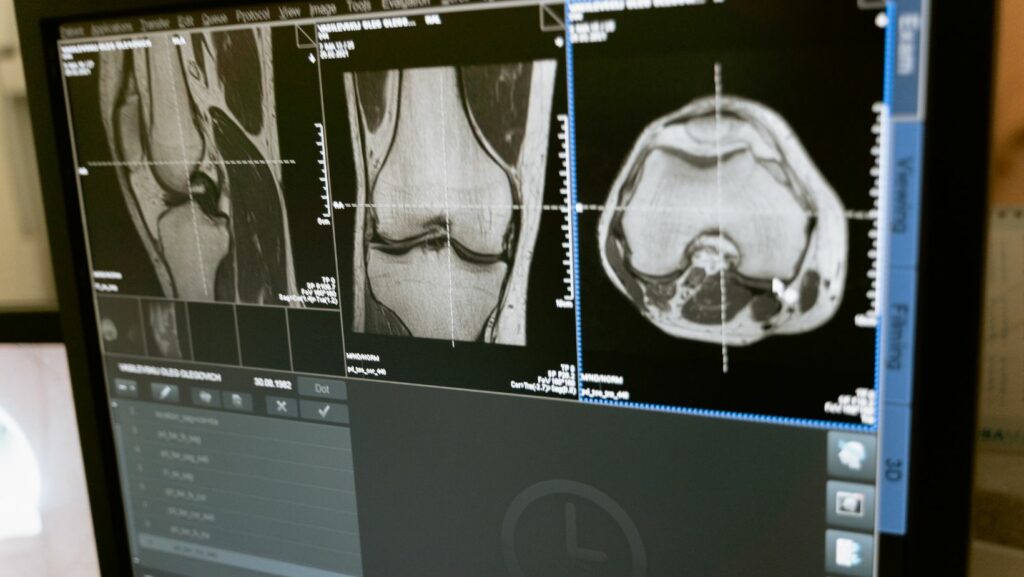
The field of radiology has come a long way since 1895, when Wilhelm Rontgen unexpectedly stumbled upon the phenomenon of X-rays. A pivotal moment that forever changed the world of medical imaging. Now, some 130 years later, we find the industry constantly pushing the boundaries of innovation, revolutionised by state-of-the-art technology. Let’s delve into the five latest breakthroughs that are transforming and enhancing the realm of radiology.
The Role of Artificial Intelligence in Radiology
In recent years, the buzz around Artificial Intelligence (AI) has been escalating. With numerous research initiatives and studies in progress, the medical fraternity is keenly exploring the potential of AI. The realm of medical imaging, in particular, stands to benefit considerably from AI advancements.
AI’s ability to swiftly sift through extensive imaging data, detect irregularities and provide profound insights is nothing short of revolutionary. AI tools are not only poised to expedite the diagnosis process considerably but also enhance its precision, thereby offering a promising future for radiology.
Mermaid Beach Radiology in Queensland, Australia, has already embraced AI technology. Because of this, radiologists now have more time to interact with patients and focus on critical cases.
Dark Field Radiography: A New Horizon in Medical Imaging
As we journey deeper into the realm of radiology, we encounter an intriguing newcomer – Dark Field Radiography. This progressive imaging technique harnesses the wave properties of X-rays, a departure from traditional radiographic methods. Through this unique approach, it illuminates soft tissues and other anatomical structures with remarkable clarity, especially when minute density variations are present.
Dark Field Radiography’s potential to furnish us with detailed, nuanced image data takes chest radiography, MRI, and CT to a whole new level. Its promise lies not just in its enhanced detail, but also in its potential to redefine diagnostic proficiency, making it a promising prospect in the complex world of radiology.
Radiomics: The Frontier of Precision Medicine
Radiomics is a rapidly growing discipline within the expansive field of medical imaging. This innovative approach transcends the conventional boundaries of image analysis. It involves the extraction of a diverse spectrum of quantitative features from radiographic imagery, which are subsequently employed for prediction, diagnosis, and prognosis.
By delving into the minute intricacies contained within these images, Radiomics seeks to enhance our comprehension of diseases, forecast the outcomes of treatments, and tailor healthcare to the individual requirements of patients. This paradigm shift in medical imaging is poised to redefine the way we detect and manage a variety of health conditions, propelling us towards the era of personalised and efficacious healthcare.
The Advent of Robotic Systems in Radiology
The integration of robotic technology into radiology is undeniably transformative, bolstering the field with unique capabilities. Robotic systems, particularly those designed for X-ray irradiation, are gaining significant traction for their remarkable precision and efficacy in reducing radiation exposure among healthcare practitioners.
Moreover, these robotic tools cement their indispensability through their stellar ability to position patients with unprecedented accuracy. As they reimagine and redefine radiological procedures, these mechanised marvels are set to become the cornerstone of future radiology. This new age of robotics within radiology holds immense potential, promising to elevate diagnostics and treatment to hitherto unexplored heights.

Augmented Reality: A Revolutionary Leap in Radiology
The relentless march of technology has ushered in Augmented Reality (AR), a groundbreaking tool in the field of radiology. AR artfully interweaves the physical realm with the virtual, equipping radiologists with an enriched, interactive platform to engage with medical imaging and patient-related data. This immersive technology accentuates the radiologist’s ability to traverse intricate anatomical landscapes, paving the way for more precise and less invasive interventional procedures.
AR is also creating ripples in the sphere of medical education, offering a tangible framework for students to comprehend complex anatomical structures. As the sophistication of augmented reality continues to unfurl, it is poised to become an invaluable resource in the realm of radiology. It heralds new echelons of precision, expediency, and safety in patient care, showcasing untapped potential for the future.
Swift and precise identification of health abnormalities is the cornerstone of preventive healthcare and effective treatment. With each progressive leap in technology, the significance of medical imaging in pinpointing and combating a plethora of human diseases becomes increasingly pronounced.
Medical imaging specialists, therefore, occupy a vital space in this landscape, leveraging cutting-edge technological novelties to safeguard our health. Their role is instrumental in harnessing these innovations, bridging the gap between advanced medical imaging tools and their practical application in healthcare, thereby championing the well-being of humanity.













